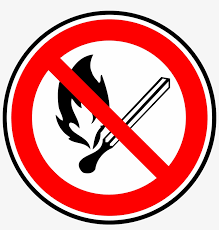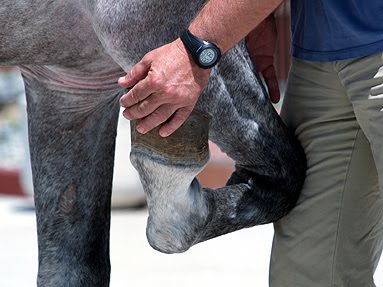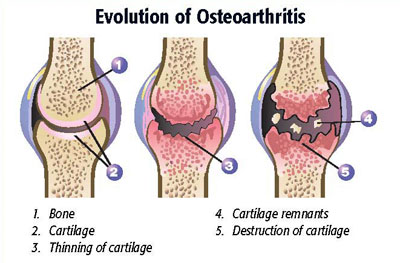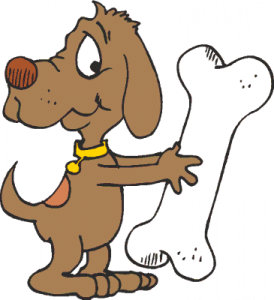 Since they’re release in 2014, I’ve been following two drugs, Tildren® and Osphos®, both of which were approved for the treatment of navicular disease in horses. I am not really very impressed with the data that was used to approve the drugs. and I have stated my concerns (click on this sentence to take you to another article).
Since they’re release in 2014, I’ve been following two drugs, Tildren® and Osphos®, both of which were approved for the treatment of navicular disease in horses. I am not really very impressed with the data that was used to approve the drugs. and I have stated my concerns (click on this sentence to take you to another article).
What’s really concerning me now is what-seems-to-be their almost indiscriminate use in some circles. Otherwise stated, both of these drugs appear to be fairly widely used in the horse world – not that anyone’s keeping track – and they’re being used for lots of conditions, including ones that may not even exist.
Why is this a problem? Oh, I don’t know. Maybe because there’s starting to be a lot of concern about horses dying and the possible contribution of these drugs to their deaths? The concern is such that a Kentucky-Derby winning horse owner, Vincent Viola, has committed half a million dollars to look deeper into these drugs and to try to come up with ways to detect them.
 You see, in racehorses, as in many other breeds, the two drugs are not being used just for navicular disease. They’re being used in:
You see, in racehorses, as in many other breeds, the two drugs are not being used just for navicular disease. They’re being used in:
- Horses with back pain
- Young horses, as part of sales preparations
- Show horses, as part of some sort of half-baked plan to “maintain” bone
- Horses with just about any problem that could involve bone (not that it necessarily does involve bone, just that it could involve bone).
In fact, the rationale for treatment often seems to be something along the lines of, “Well, the problem could involve bone, these drugs might do something to bone, so let’s give some and let’s see what happens.” What could possibly go wrong?
 For comparison, let’s look at antibiotics. Antibiotics have been given pretty indiscriminately over the past many decades. The rationale for prescription has sometimes been along the lines of, “He’s sick, it could be bacteria, or maybe bacteria could join in the infection, so let’s give antibiotics.” What could possibly go wrong?
For comparison, let’s look at antibiotics. Antibiotics have been given pretty indiscriminately over the past many decades. The rationale for prescription has sometimes been along the lines of, “He’s sick, it could be bacteria, or maybe bacteria could join in the infection, so let’s give antibiotics.” What could possibly go wrong?
Oh, let’s see…. Antibiotic-induced diarrhea? Resistance to antibiotics building up in the bacteria population? Reactions to antibiotic injections? Nah… well, maybe… well, to be frank, that’s exactly what can happen and what has happened. This may sound a bit obvious, but I don’t think that a horse should be given a drug without a good data showing how it works (if it works), without a firm diagnosis, and without a good treatment plan. And, as it turns out, that’s exactly the sort of thing that’s happening with Tildren® and Osphos®.
In fact, rather than strengthening bones as intended, misuse of these drugs could make bones weaker, more susceptible to fractures. Here’s why.
Bone is pretty marvelous stuff. Here’s a wonderful video about the process of bone formation and remodeling.
If you’re interested enough to see this whole video (it’s part of a very impressive series), you’ll find that normal bone modeling is important for normal bone strength and development. Normal bone development is part of the goal in raising and maintaining horses, don’t you know.
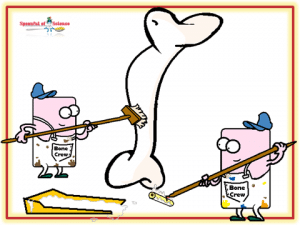 Think of bone like a painted wall. You want to put a fresh coat of paint on the wall. The first thing that you do is clean the wall. Osteoclasts are the clean up crew, washing the wall and removing paint chips. NNext, you pain the wall. Osteoblasts come in and put on the fresh coat of paint. In that way, bones are constantly being built up, old, weak bone is removed (by osteoclasts), and new, strong bone is laid down (by osteoblasts). Osteoclasts clean up old, damaged bone. Osteoblasts lay down new, strong bone.
Think of bone like a painted wall. You want to put a fresh coat of paint on the wall. The first thing that you do is clean the wall. Osteoclasts are the clean up crew, washing the wall and removing paint chips. NNext, you pain the wall. Osteoblasts come in and put on the fresh coat of paint. In that way, bones are constantly being built up, old, weak bone is removed (by osteoclasts), and new, strong bone is laid down (by osteoblasts). Osteoclasts clean up old, damaged bone. Osteoblasts lay down new, strong bone.
The idea that you can make bone stronger by just stopping the clean-up crew is kind of simplistic – even dumb, actually. Imagine you were painting your wall and you didn’t ever clean it. Sure, you can put on some fresh paint, and it might look good for a bit, but pretty soon the new paint starts chipping and peeling. You can put on some more paint, but soon, the wall looks worse. With bone, over time, keeping osteoclasts from doing their job means that bone becomes brittle and more fragile. And that’s exactly why, in humans, long-term use of bisphosphonate drugs is associated with spontaneous fractures and bone that is ultimately weaker.
So, insofar as “routine” use of bisphosphonate drugs in horses, These facts bring up a couple of very important questions that should be in the mind of anyone that actually cares about the well-being of a horse.
- Why in the world would you want to try to mess with this wonderful system? This elegant system is working all the time and it’s one of the many things that make bones such wonderful, adaptive structures.
 Why in the world would you want to try to mess with this wonderful system in a young animal that was developing his skeletal system? Otherwise stated, why in the world would you ever want to give this stuff to a young, growing horses, like a 2- or 3- year old?
Why in the world would you want to try to mess with this wonderful system in a young animal that was developing his skeletal system? Otherwise stated, why in the world would you ever want to give this stuff to a young, growing horses, like a 2- or 3- year old?- Why in the world would you ever want to give this sort of medication to ANY horses for “bone maintenance,” especially when normal bone formation is essential for the horse’s body?
- Why in the world would you want to give this sort of a medication when some sort of bone injury is suspected? These medications are toxic to osteoclasts, the cells that remove injured bone. Osteoclasts are vital to bone re-growth and fracture repair. Giving such medications to horses with injured bone could mean that the normal bone repair process is inhibited. Why, exactly, would you ever want to do that? In fact, it’s been reported that fracture lines can still be seen in horses treated with these drugs as long as 14 months after the initial injury, long after the fractures should have healed.
 Add to all of those questions the fact that these drugs may help relieve bone-related pain. This, at least theoretically, might allow a horse to go ahead and perform on an injured bone. That, of course, is quite simply a recipe for disaster. Catastrophic fracture or breakdown type disaster is not an unreasonable outcome if you ask a horse with an injured but pain-free bone to perform athletic endeavors.
Add to all of those questions the fact that these drugs may help relieve bone-related pain. This, at least theoretically, might allow a horse to go ahead and perform on an injured bone. That, of course, is quite simply a recipe for disaster. Catastrophic fracture or breakdown type disaster is not an unreasonable outcome if you ask a horse with an injured but pain-free bone to perform athletic endeavors.
This indiscriminate use has been recognized as a problem. In 2017, the British Horseracing Authority (BHA) issued a rule that required any horse receiving these drugs to be taken out of racing for 30 days. In addition, they decided that any horse less than 3 1/2 years of age that received these drugs can’t run in a BHA race at any time in its life. Good for them. And the US may be starting to catch up. However, in the show horse world, I’m not aware of any such concerns, although concerns there certainly should be.
 We (speaking on behalf of veterinary medicine) don’t even know how long these drugs stay in the horse’s system. We can detect them for about 100 days in the blood after they are given, but beyond that, the effects are anyone’s guess. They could last in bone for longer… or… maybe not at all. Really… who knows?
We (speaking on behalf of veterinary medicine) don’t even know how long these drugs stay in the horse’s system. We can detect them for about 100 days in the blood after they are given, but beyond that, the effects are anyone’s guess. They could last in bone for longer… or… maybe not at all. Really… who knows?
The current usage of these drugs in some circles is a sort of a therapeutic Russian roulette at this point, really. I guess it’s OK if you choose to play the game on your own, but in my way of thinking, it’s not OK to play with the life and health of a horse. Of course, the reality of all of this is that the indiscriminate use of these drugs is purely due to people worrying only about success and money and being willing to try just about anything to achieve it, and very little about the actual health of the horse. Economics and greed trump science and ethics just about every time.

Finally, to be clear, although I’m not really very enthusiastic about them, I’m not saying that one should always avoid these drugs under any circumstances. But I am saying that if they’re used, they should be used for the condition for which they are approved (navicular disease) and only under the advice of your veterinarian. They should never, even – NEVER – be used in some sort of “bone maintenance” scheme and they should probably never be used long-term. Why play with fire when it comes to your horse’s health?